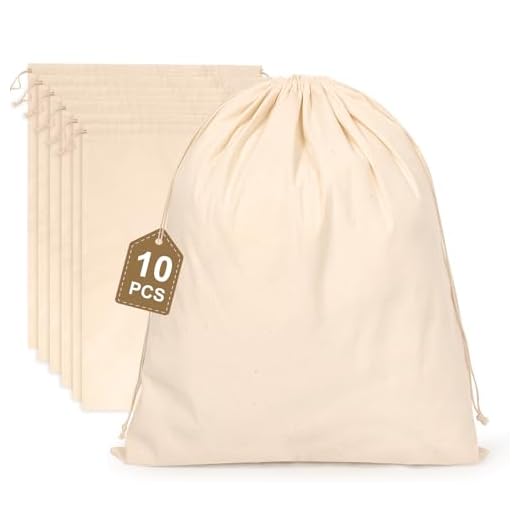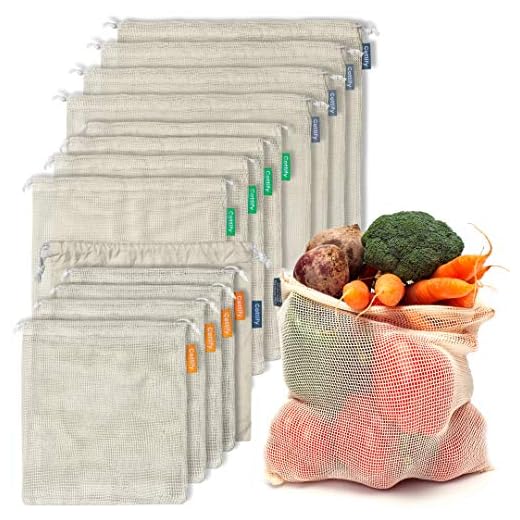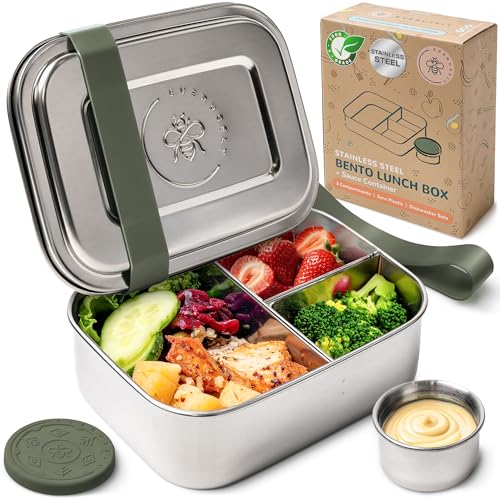
Keep Produce Fresh with Cotton Sacks
You can keep fruit and veg fresh for months with cotton sacks. Use simple steps and steady habits. You save money. You cut waste. This guide shows how to sort, pack, store, and care for your harvest all winter long.
What You Need
Keep Produce Fresh Longer: Top Produce Storage Tips
Choose the Right Cotton Sacks
The bag matters. The wrong one ruins months. Which cotton wins?Pick plain, uncoated cotton. Use a tight plain weave that still breathes.
Choose new sacks that will not hold smells or coatings.
Avoid plastic-lined or waxed sacks. They trap moisture and rot crops.
Size sacks to the crop. Use big sacks for potatoes. Use small sacks for shallots or garlic.
Wash new sacks in hot water and dry them. Expect new cotton to shrink on the first wash. Wash removes dust and factory smells.
Use sacks with drawstrings or make a tied top. Close sacks loosely to let air move. Mark each sack with a pencil or a strip of tape. Note crop and storage date. Write on the tape or tag, not the fabric.
Buy a few spare sacks for rotation and repair. Keep at least two extra for each crop you store.
Sort and Cure Your Harvest
Want months of freshness? Start with hard choices. Toss the tired pieces.Sort with care.
Remove bruised or split items.
Discard rotted pieces. One bad piece spoils many.
Cure root crops when needed.
Cure onions and garlic in warm, dry air for 7–14 days.
Cure winter squashes and pumpkins until skins harden.
Let potatoes dry in shade for a few days to toughen skin.
Cut tops off long‑storing veg like beets and carrots.
Leave a short stem on onions.
Do not wash most roots before storage.
Brush off loose soil. Dirt helps preserve them.
Label each lot with date and type.
Mark sacks so you know what and when.
Check one sack now and then to learn what works.
Try an onion cure for a week and record the result.
This first step sets how long they last.
Pack Produce Smartly in Layers
Stack like a mason. Leave air. Space saves food.Layer with care. Put a breathable liner or plain paper between layers so items do not rub.
Keep sacks no more than two thirds full. Let air move. Do not pile high. A heavy pile bruises the bottom fruit.
Separate ethylene producers. Place apples away from leafy greens and potatoes. For example, keep apples in their own sack or on top of other produce.
Wrap fragile fruits in paper or cloth. Cushion with loose filling like straw or folded paper. For example, wrap pears in newspaper and nest them in straw.
Fold sack tops and tie lightly. Face labels outward so you can read them without opening the bag.
Quick rules:
Fold tops with a small ventilation fold or pin a dated card to the bag if the sack will sit for months.
Store Sacks in the Right Place and Monitor
Cool, dark, stable. Not damp, not hot. Little checks keep months of food.Find a cool place. Basements, cellars, or a cool closet work well. Aim for a steady temperature. Most roots like 32–40°F. Onions and garlic like 40–50°F. Keep light low. Light wakes sprouts.
Control humidity. Keep it moderate. Too dry and veggies shrivel. Too wet and rot spreads. Use a hygrometer if you have one. Keep sacks off the floor on racks or pallets. Space sacks apart so air can pass.
Check weekly. Feel for soft spots. Smell for off odors. Move a sack if you find trouble. Pull a single bad item. Small action stops big loss. For example, take a soft potato out and eat it that week. If you smell rot, open sacks and air them for a day.
Maintain, Rotate, and Repair
A stitch saves yield. Inspect, mend, use. Never leave a rot to spread.Inspect sacks often. Open a sack and look inside. Pull out any soft or rotten item. Toss or cook spoiled pieces at once.
Mend holes quickly. Sew tears with strong thread or patch with spare cloth. Tie loose seams. Reinforce corners that rub.
Rewash sacks if they smell. Hang them to dry in sun. Air a sack on a dry day for two hours if it smells damp.
Rotate stock on a FIFO rule. Move older sacks forward. Use older produce first. Relabel dates when you move items. Mark with a pencil or tag.
Keep a simple list. Note sack contents, pack date, and problems. Check the list when you pick items. Track what lasts and what fails.
Use a quick example: mend a torn potato sack the night you find it. Move that sack to the front. Eat the softened potatoes first.
Small fixes keep your store for months.
Start and Save
Buy or make cotton sacks. Sort and pack with care. Store and check weekly. Mend and rotate. You will cut waste and keep food months. Try it. Share your results.













Nice write-up. One thing I wondered: the guide talks about repairing sacks. Has anyone patched a sack successfully? What’s the best technique?
Question: any thoughts on washing produce before packing? I like clean veggies, but maybe I should wait. The guide says sort and cure, but not whether cleaning is ok first.
This is a rookie mistake I made once — ended up with soggy sacks. Learned to wait.